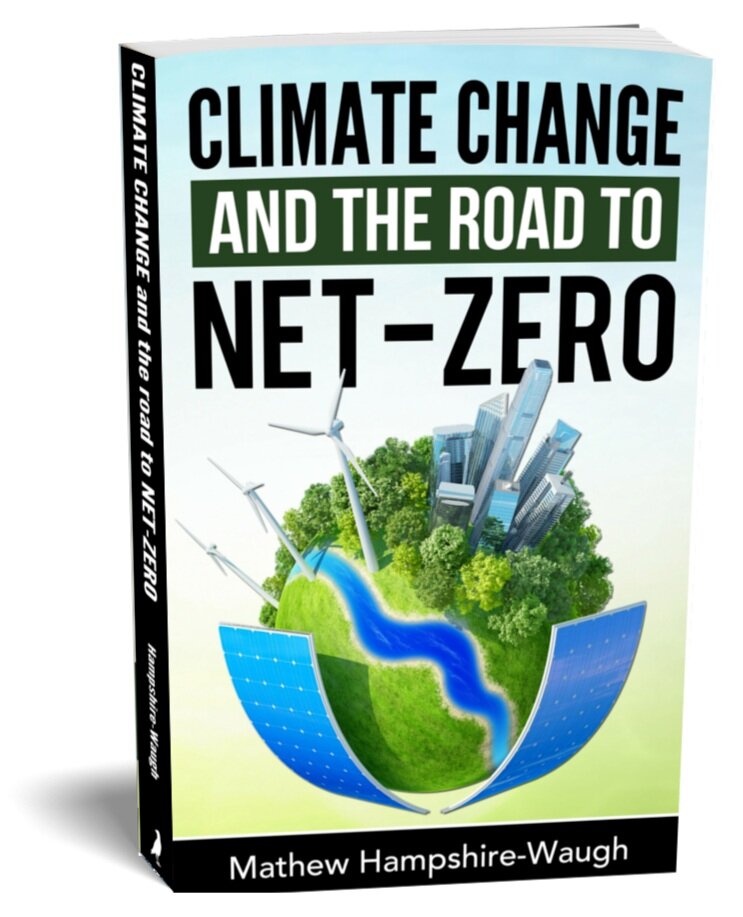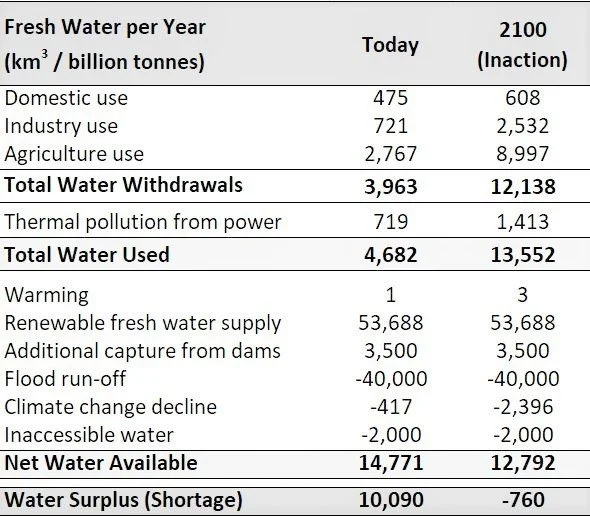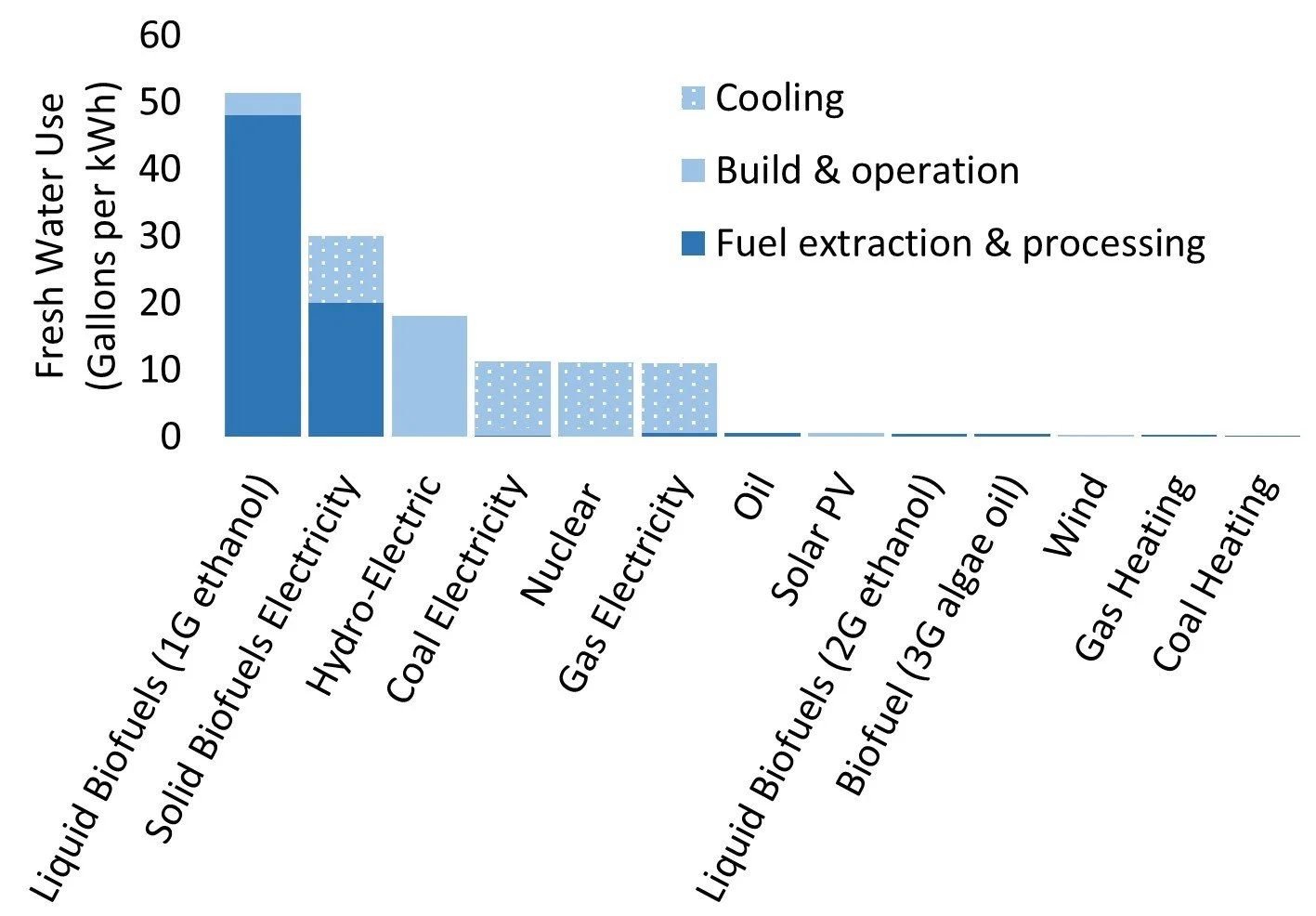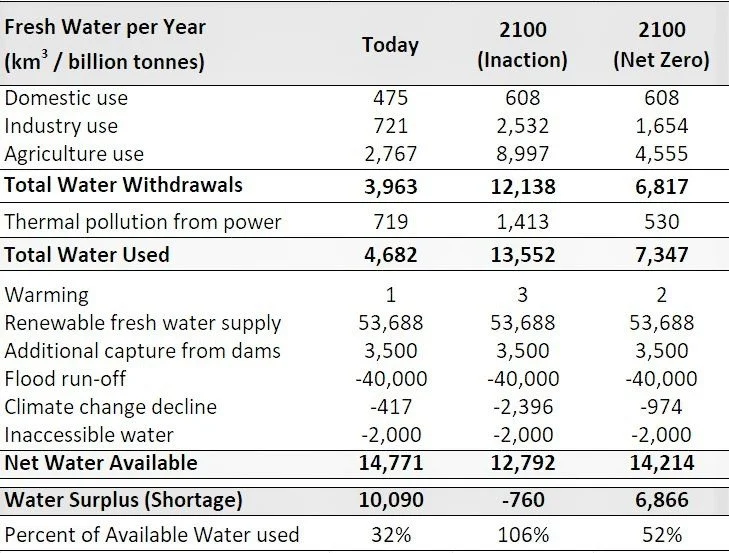Water Supply, Climate Change, & Net-Zero
In this post from NET-ZERO:
How will climate change affect the availability of fresh water? Higher temperatures mean more rain, which will fall in less regular, intense bursts creating more run off over dry, hardened soils. Rising sea levels and extreme flooding further threaten the destruction of water points, sanitation facilities and the contamination of water sources.
How much water does energy generation require? Why renewables require far less water use compared to biofuels or thermal power plants.
Is the World running out of water? Continue burning fossil fuels and we risk running dry this century. Switch to Net-Zero and the World can better manage our precious natural resources.
Fresh Water & Climate Change
Higher temperatures and changes in weather patterns are predicted to affect the availability and distribution of rainfall, snowmelt, river flows, and groundwater. The world will experience more rain, but it will fall in less regular, intense bursts creating more run off over dry, hardened soils. Rising sea levels and extreme flooding further threaten the destruction of water points, sanitation facilities and the contamination of water sources.
According to the United Nations, water availability is already becoming less predictable.
There are 1.4 billion km3 of water on planet Earth which is 350,000 times more than we use each year. Unfortunately, 97% is salt water and 2% is frozen at the poles. That leaves just 10 million km3 of potential useable water in the ground and 100,000 km3 in lakes and rivers.
Accessible water stores are replenished at a rate of just 15,000 km3 per year. Today the world uses around 4,000 km3 of fresh water each year or about one third of the sustainable supply for agriculture (70%), industry (18%) and households (12%). Another 700 km3 is used to cool fossil fuel and nuclear power plants but reintroduced into the waterways.
Yet because of the unequal distribution of water on the planet, nearly 800 million people still lack access to clean drinking water, half the world has no basic sanitation, and one third of countries have medium to high levels of water stress.
Climate change will place further burden on the availability of fresh water.
Globally, every 1⁰C warming could severely reduce water availability by 5-10%. Hafsa Munia from the Water and Development Research Group estimates that under a high emissions scenario 380 million more people will suffer from water stress by 2050.
The global population is expected to expand by at least 30% so if no changes are made to diets or our agricultural system, we will need to increase crop production from 9 billion tonnes to 12 billion tonnes per year.
The need for higher yields or more agricultural land coupled with an increasing frequency of droughts will require the amount of irrigated cropland to triple from 20% to 60% of all acres (because irrigated land averages double the yield of non-irrigated land).
Combine this with a greater demand for water in households, industry, and power generation and by 2100 we may well breach the sustainable supply of fresh water globally.
This would place most areas in high water stress unless greater storage, water management, or desalination can be effectively deployed. The impacts will be felt earliest and hardest in the Mediterranean, Africa, and in countries such as Egypt, Iran, Mexico, and Turkey. Lack of water will cause disruption to drinking water supplies, thermal power plant management, services, and agriculture.
Competition over water resources is also tied to conflict and areas such as the Sahel in Northern Africa have ten countries sharing the same water course. Ethiopia, Egypt, and Sudan are already locking horns over potential water shortages following the ongoing construction of the Grand Ethiopian Renaissance Dam.
Water Consumption and Future Energy
So a growing global population and warming planet will put further pressure on already vulnerable fresh water supplies and growing energy production could add to the problem.
First generation biofuels consume the largest quantities of freshwater for irrigation of the fuel crop. Solid biofuel electricity may consume similar quantities of water depending on the irrigation needs of the biological fuel. Second generation biofuels require only steam for processing and third generation algae should be able to use wastewater or salt water.
Hydroelectric reservoirs lose a significant amount of water due to evaporation during operation.
Thermal power plants withdraw around ten gallons of water for cooling per kWh of electricity generation and another gallon is consumed during operation. The withdrawn water is routed back into the watercourse but there are limits on the return temperature.
The remaining energy sources consume fresh water during resource extraction, processing, and equipment build, but this is minimal if averaged over the lifetime of operation.
With our current fossil-fuel-based electricity system it takes about 11 gallons of water to produce one kWh of electricity. So for every cup of water you boil in the kettle, it takes another two cups to generate that electricity.
Sustainability of Natural Resources in a Net-Zero Economy
With no change to our energy and agricultural systems, global water use will quickly breach sustainable limits and the world will be forced to desalinate sea water at an estimated cost of at least $3 trillion per year.
However, switch to a net-zero system of energy supply and accompanying demand changes and industrial water use would decline by more than one third in 2100 thanks to less waste and a shift to wood products rather than cement and metals.
Changes to diet and our agricultural system could halve the volume of water required for irrigation, with less demand for animal feed, less global warming, and fewer droughts.
Uneven distribution of water resource will, however, still require many areas to improve access to water and storage or deploy desalination by the end of this century.



